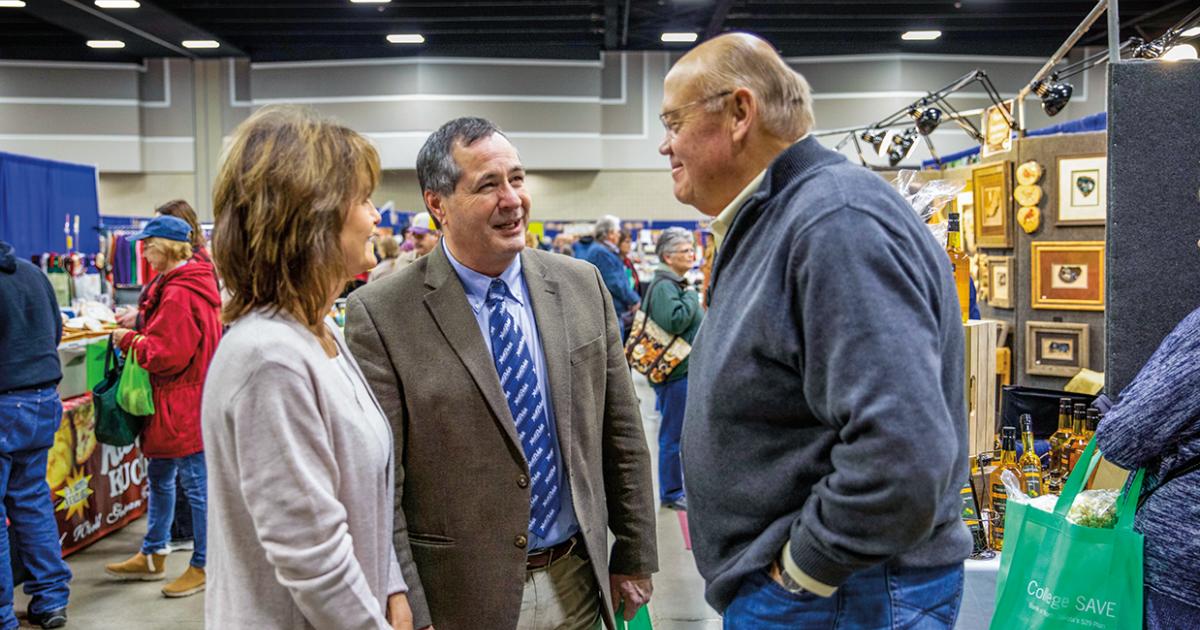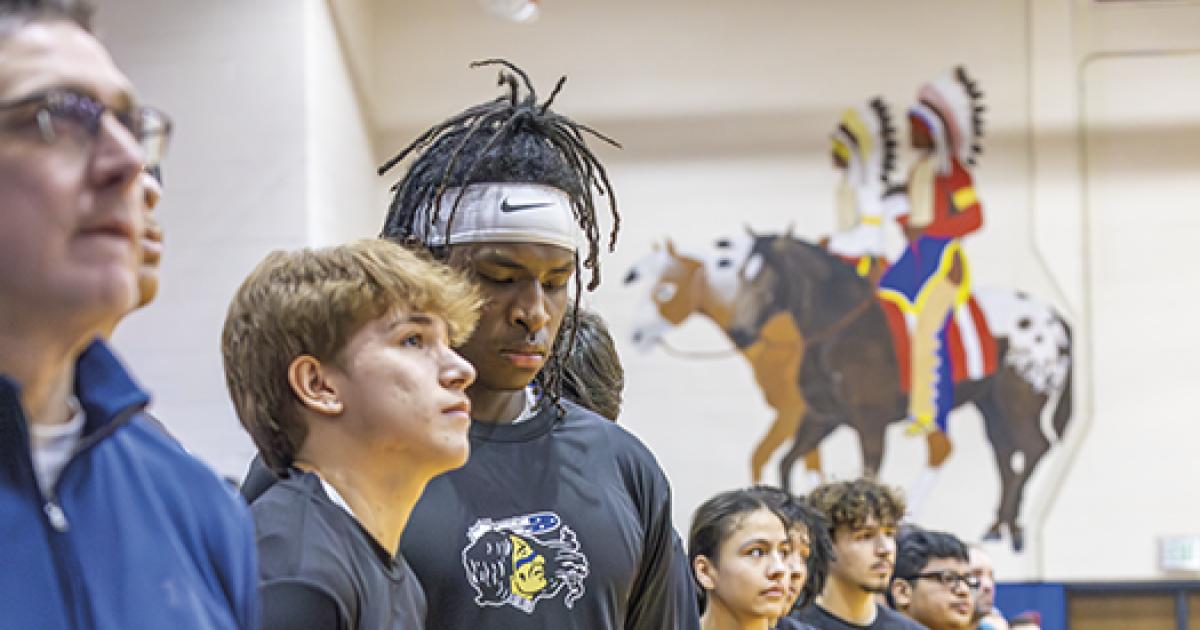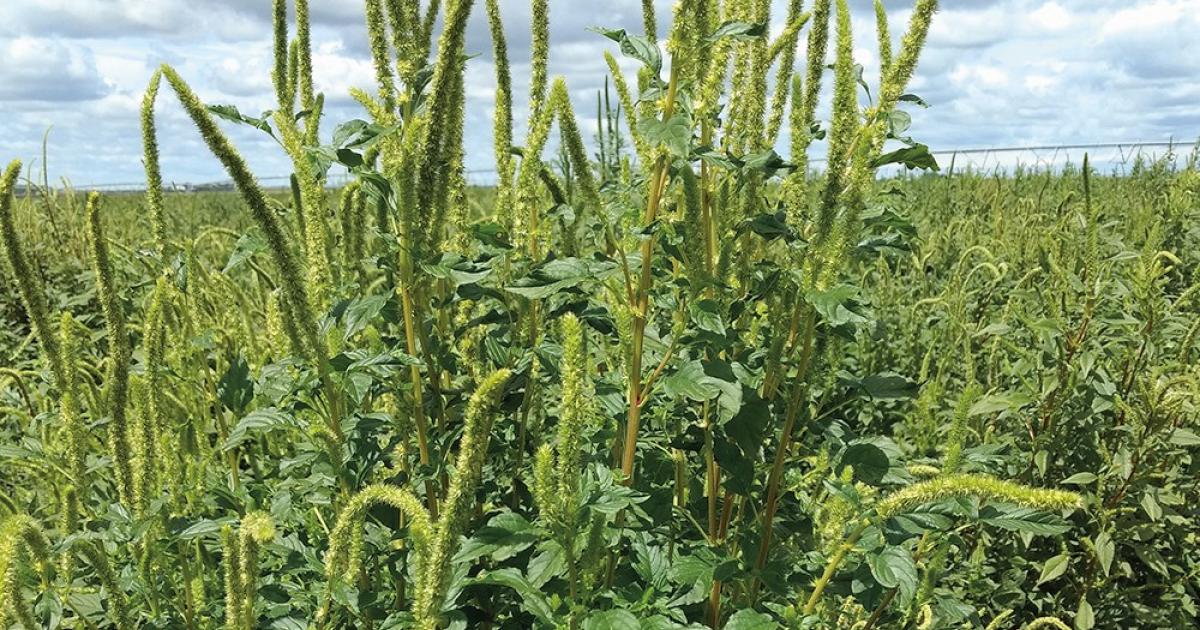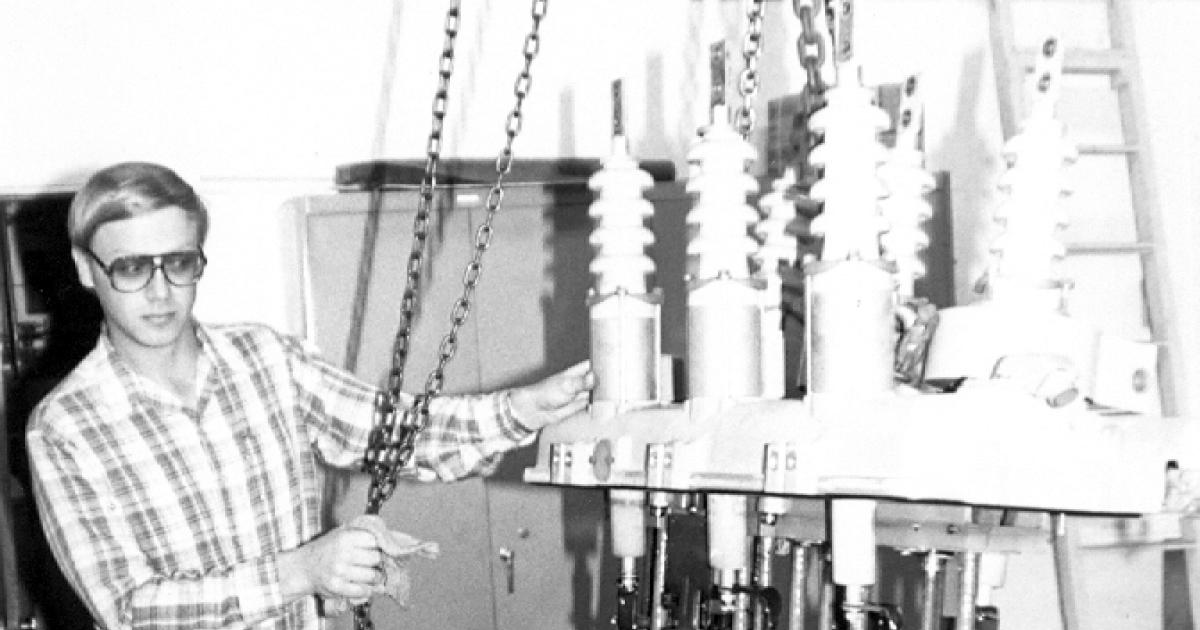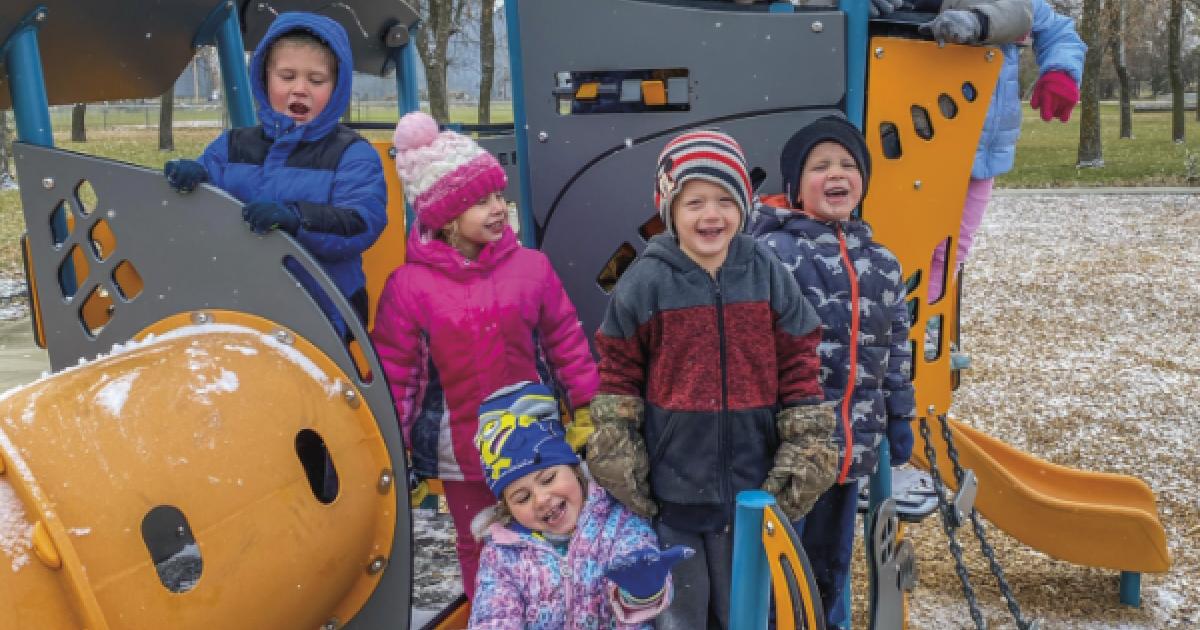The coronavirus pandemic disrupted communities across the globe and many facets of everyday life. Schools, teachers, students and parents adapted to distance learning. Health care workers adapted to provide care and find room for the sick. And the business community adapted to innovatively deliver goods and services.
Perhaps that is best illustrated locally by the ingenuity of the “Pride of Dakota” people and their homegrown businesses.
N.D. Agriculture Commissioner Doug Goehring and his wife, Annette, visit with Pride of Dakota retailer Larry White of 17Thistles, which makes cold-pressed safflower cooking oil, at the 2019 Pride of Dakota Holiday Showcase in Bismarck. Photo Courtesy N.D. Department of AgriculTure
“It shocked everybody as to what was going on, but I saw something in our companies this spring,” says N.D. Agriculture Commissioner Doug Goehring. “It was so enjoyable to watch how quickly they adapted. They looked at creating a new product or learning a new skill, based on what need existed in the market. (The pandemic) gave quite a few of them time to assess, or reassess, their business plan. Some actually took the time to maybe reinvent themselves a little bit. Others became more familiar with online sales. It is so amazing to see how creative and innovative we are in North Dakota.”
DIVERSE MEMBERSHIP
The Pride of Dakota program began in 1985 as a way to promote and enhance the marketing of North Dakota businesses, products and services. Administered by the N.D. Department of Agriculture, Pride of Dakota offers business development resources and marketing opportunities to help local business owners start or expand their business. Under Goehring’s tenure as ag commissioner, Pride of Dakota has grown from around 300 members to nearly 600.
“We recognize that every company has their own personality, and are trying to accomplish different things,” Goehring says.
The Pride of Dakota membership is diverse. Some pursue their ventures full time, while others use it as their secondary source of income or operate seasonally. Consumers will find a wide range of products using the Pride of Dakota stamp, from food and beverage items, to personal care products and artisan gifts. Pride of Dakota membership is even maintained by numerous North Dakota authors, manufacturers and nonprofit organizations.
“We can have some really well-established companies. We have others that are startups. We have some that are small in nature, but want to now work on or introduce new things, new concepts, new products,” Goehring says. “So, it is quite fun, because no day and no company are the same. Everybody has a little bit different approach to this.”
SUPPORTING LOCAL
The disruption caused by the COVID-19 pandemic might have some positives, after all. It was seen this spring and summer, with a renewed reliance on shopping local. The demand for local meat soared and struggling rural grocery stores enjoyed strengthened relationships with the local customer base.
“When people couldn’t find it at their big box stores, they started looking around in their own backyard,” Goehring says.
In a typical year, shoppers are able to find their favorite Pride of Dakota sellers at holiday showcases around the state. Some of the showcases have been canceled this year due to COVID-19, but Goehring directs supporters to the Pride of Dakota website, www.prideofdakota.nd.gov(link is external), where contact information for each member business is listed. It is especially important, Goehring emphasizes, to support local businesses through the pandemic.
“In all of our communities, we have these little Pride of Dakota companies that no one really knows about. Those are the entities we need to support,” he says. “The website gives you an idea of where you can go in your community, or close by, who you can support, and how it really does impact our rural communities, our communities in general and our state.”


